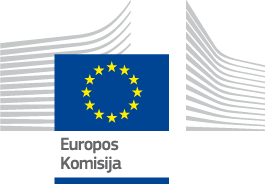

Good Practice Project
Through cooperation with local fishermen and designers, and inspired by traditional techniques from other fishing communities in Europe, a young French entrepreneur has developed an innovative fish skin tanning process and now sells her “marine leather” to fashion designers all around the country.
As in many areas depending on small-scale fishing, communities in the Bassin d’Arcachon face social, economic and environmental challenges that put their heritage and future at risk. However, such communities can also navigate through these challenges by adapting to new contexts, needs and opportunities.
With the combined support of Axis 4 of the EFF and the European Social Fund, Marielle Philip brought together her business skills, family heritage and innovative ideas to develop a new product, demonstrating the possibilities of circular fisheries economy.
The project aimed to develop an innovative tanning technique that would convert fish skin into a high grade leather for use in the fashion industry.
The project started as an Axis 4 co-financed study, which was carried out between 2012 – 2013. This brought together interested stakeholders and, with the assistance of local women, facilitated the testing of different tanning techniques, such as, for example, the use of invasive plant species as a natural tanning product.
Local fishermen and seafood processors were involved in providing the raw material. After this preliminary study phase, a pilot production facility was set-up in 2013, with the assistance of the European Social Fund, and the first customers were identified.
In November 2014, the company was formally established and the brand, "Femer Peau Marine" ©, was registered. In addition to the initial financial support, the FLAG was closely involved throughout the development of the project, helping the owner to make contacts and promote the product both locally and internationally.
Project website: www.femer.fr
The project resulted in the development of an innovative technique for tanning fish skin, using a local invasive plant, which is now a registered trademark (FEMER®, fish skin from Arcachon Bay).
The company works with 40 craft workers, who purchase the FEMER® fish skin and develop new products that benefit from significant visibility in the media, both locally, nationally and at European level.
Three people were involved in the project, one of which is a salaried position.
The project highlights the potential of breaking down barriers between local entrepreneurs and more “traditional sectors”, which harbour a wealth of local resources and knowledge that can be adapted to create innovative products and ideas.
It demonstrates how the circular economy can work in a coastal community: building on local fisheries resources, having a positive impact on the environment, and promoting sustainable and inclusive growth.
It also benefitted from the networking opportunities offered by FARNET, for example, through the transfer of good practice from Finnish fisheries communities involved in FLAG Osterbotten, and active networking with other Axis 4 stakeholders during FARNET events.
Difficulties encountered by the project included the absence of advance payment, which forced the project promoter to draw on personal funds before receiving Axis 4 support and map other grant sources. However, this helped the project promoter to gain visibility and confidence on her project.
The project was implemented during the 2007-2013 programming period with the support of the FLAG FR06 Bassin d’Arcachon – Val de l’Eyre.
 Discussions and cooperation:
Discussions and cooperation:
The project owner is interested in developing links and sharing ideas at EU level including other entrepreneurs and innovators. Cooperation needs and opportunities identified by the project include:
| Total project cost | €10 085 |
|---|---|
| FLAG grant |
€8 068
|
| Beneficiary contribution |
€2 017
|
| Timeframe of implementation | From Mar 2012 to Dec 2014 |
|---|---|
| Sea Basins |
|
| Type of area |
|
| Theme |